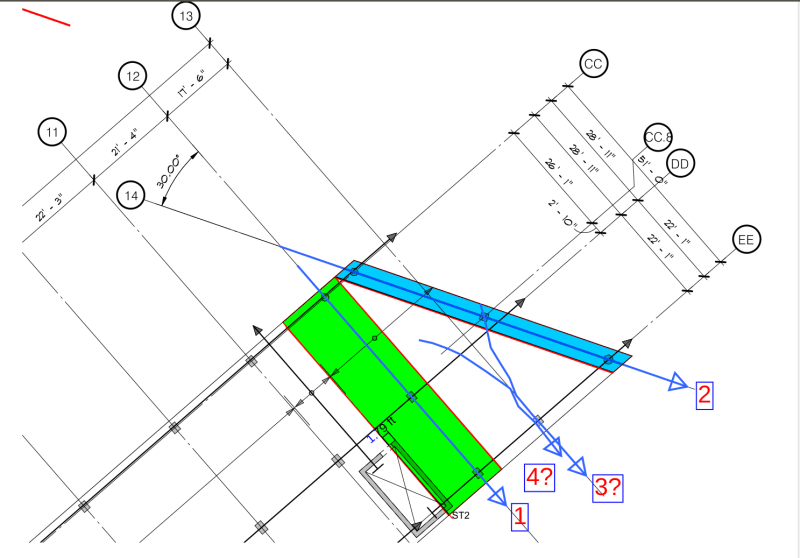Jayeshanu
Structural
- Feb 27, 2019
- 1
I am at a loss as to how to apply equivalent frame analysis method for a irregular slab layout. I am designing a 2 way PT flat plate
For example with reference to the image
Tendons 1 and 2 will cover the green and blue highlighted strips respectively. That leaves a triangular shaped slab with only one column at EE-14. How would I analyse this using equivalent frame method.
For example with reference to the image
Tendons 1 and 2 will cover the green and blue highlighted strips respectively. That leaves a triangular shaped slab with only one column at EE-14. How would I analyse this using equivalent frame method.

